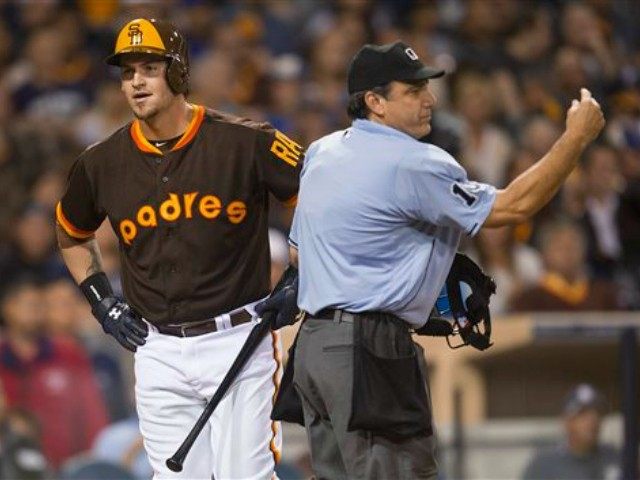Those who deem the pace of baseball glacial will be delighted to hear that Major League Baseball and the MLB Players Association have plans to melt the time down and expedite the process.
Four rule changes will be implemented in the 2015 season, according to FOX Sports:
- Managers will be required to request instant replay challenges from the dugout. The delays resulting from managers gabbing on the field while coaches and video coordinators decided whether a play was worthy of replay will be eliminated.
- Batters will be required to keep one foot in the batter’s box between pitches, unless a special exemption is granted. When this rule was established in 2014 in the Arizona Fall League, foul balls, foul tips, wild pitches, and umpires calling time could not be used as an excuse for stepping out.
- No delays after coming back from TV commercials.
- Timed pitching changes; violations will incur fines.
MLBPA executive director Tony Clark commented, “Players are willing to consider certain things relating to improving the game … Players are always interested in doing that. But they are always sensitive to making adjustments that will adversely affect the game. They love it, respect it too much to try and reinvent the wheel in such a way that will damage the game.”
The 2014 Arizona Fall League also tried other rule changes: a maximum break between innings of 2:05, a maximum of three mound visits per game, not including pitching changes, and a simple signal indicating an intentional walk rather than throwing four pitches.
Another idea that MLB may add in the future is a pitch clock, which the 2014 Arizona Fall League tried, shortening games by an average of ten minutes.
Baseball has instituted numerous rule changes since the advent of the modern era in 1901 that fans take for granted, including: adding the cork center to the official baseball (1910), failure of a preceding runner to touch a base not affecting the status of a succeeding runner (1920), minimum home-run distance to be set at 250 feet (1925), no fielder taking a position in line with a batter’s vision with the deliberate intent to distract the batter (1931), all players required to wear protective helmets (1971), and official baseballs permitted to be covered with cowhide because of the shortage of horses (1975).

COMMENTS
Please let us know if you're having issues with commenting.